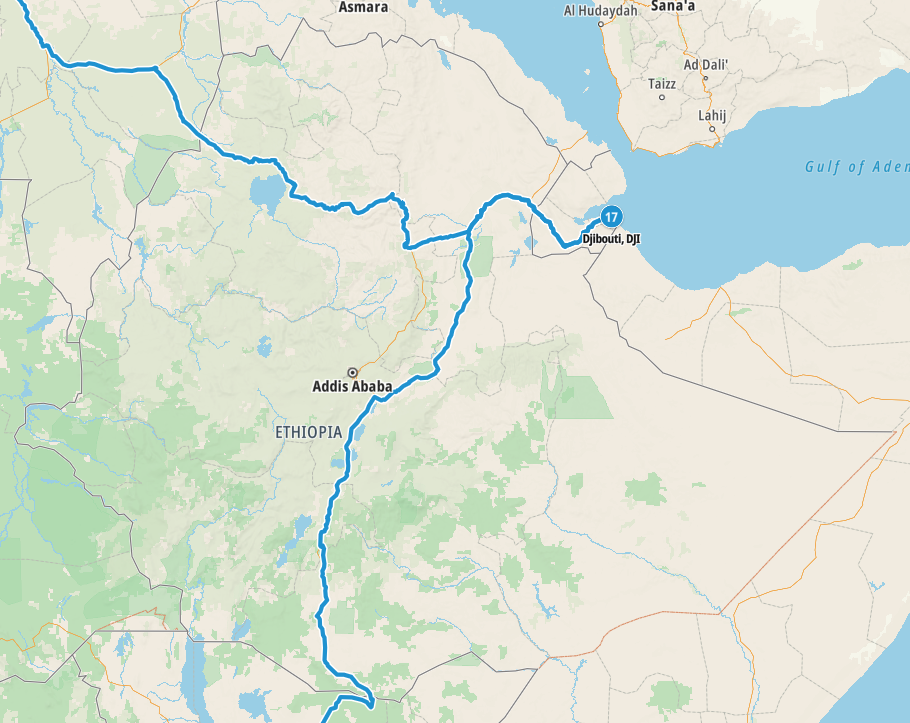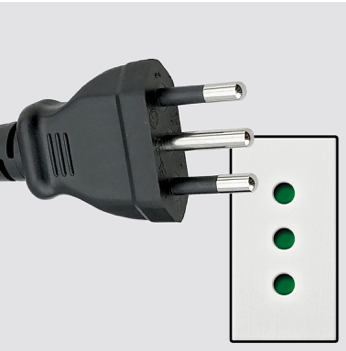Ethiopia – Let’s explore here

What’s it like in Ethiopia?
Ethiopia is a beautiful, mountainous, landlocked country in central Africa, dominated by the Great Rift Valley, which runs from north east – south west. Its name in its other official languages is Rippabliikii Federaalawaa Dimokraatawaa Itiyoophiyaa / የኢትዮጵያ ፌዴራላዊ ዴሞክራሲያዊ ሪፐብሊክ.
It’s about three times the size of Germany. In the east lie deserts and in the south there are tropical forests, whilst the Abyssinian Highlands is the largest continuous mountainous range in Africa, most of which is over 5,000 ft (1,524 m) in height. The highest point in Ethiopia is Ras Dashen, in the Simien mountains in the far north, at 14,930 ft (4,550 m) above sea level.
It has a very long history, dating back millions of years – the earliest known ancestors of modern humans were found in Ethiopia. The holy Christian site of Lalibela, with its famous rock-cut monolithic churches, is also in Ethiopia.
The population of Ethiopia is around 133 million people (2024), almost six million of whom live in the capital, Addis Ababa. It’s the second most populous country in Africa, and Addis Ababa is one of the highest capitals in the world, at 7,726 feet. It shares land borders with Djibouti, Eritrea, Kenya, Somalia, South Sudan and Sudan.


A bit about the history of Ethiopia
Ancient Ethiopia
Ethiopia, one of the oldest countries in the world, has a rich and diverse history dating back to ancient times. The Kingdom of D’mt, established around the 10th century BC, is considered one of the earliest civilisations in the region, and was followed by the Aksumite Empire. The Aksumite Empire, which emerged around the 1st century AD, became a dominant power in the Horn of Africa and controlled large areas of modern day Ethiopia, Eritrea, Sudan and the Arabian Peninsula. It was one of the first kingdoms to adopt Christianity in the 4th century, and the Ethiopian Orthodox Church remains a central part of the country’s culture.
Medieval Period
After the decline of the Aksumite Empire around the 7th century, Ethiopia entered a period of political fragmentation, with various regional kingdoms rising and falling. During this time, the Zagwe Dynasty ruled from the 10th to the 13th century, most notably building the rock-hewn churches in Lalibela, which are now a UNESCO World Heritage site. The Solomonic Dynasty, claiming descent from the biblical King Solomon and the Queen of Sheba, re-established centralised rule in the 13th century. The Solomonic rulers oversaw the expansion of Ethiopia, and during the reign of Emperor Menelik II in the late 19th century, Ethiopia successfully resisted colonisation, notably defeating the Italian forces at the Battle of Adwa in 1896.
Italian Occupation and Resistance
Despite its success in resisting Italian colonisation in the 19th century, Italy invaded Ethiopia again in 1935 under the regime of Benito Mussolini. This led to a brutal occupation that lasted until 1941, when Ethiopian resistance forces, aided by British forces, successfully expelled the Italians. Emperor Haile Selassie, who had been exiled during the occupation, returned to the throne in 1941 and became a symbol of African independence, famously appealing to the League of Nations for help during the Italian invasion.
Haile Selassie and Modernisation
Emperor Haile Selassie ruled Ethiopia from 1930 to 1974. He sought to modernise Ethiopia, introducing reforms in education, infrastructure and the economy. Ethiopia was also a founding member of the United Nations and the Organisation of African Unity. Despite these efforts, Selassie’s reign was marked by widespread poverty and a growing divide between the ruling elite and the peasantry. His failure to address economic inequality, combined with discontent over the monarchy’s authoritarian rule, led to growing unrest.
The Derg and Socialist Ethiopia
In 1974, Haile Selassie was overthrown in a coup led by the military group known as the Derg. The Derg, under Colonel Mengistu Haile Mariam, established a Marxist-Leninist regime and embarked on radical land reforms, nationalising industries and attempting to build a socialist state. However, the Derg’s policies led to widespread famine, particularly in the 1980s, which resulted in the deaths of hundreds of thousands of Ethiopians. The government also faced armed resistance from various rebel groups, including the Tigray People’s Liberation Front (TPLF), and internal power struggles. Mengistu’s regime became increasingly repressive and corrupt, culminating in his eventual overthrow in 1991.
Federalism and the TPLF Era
After the fall of the Derg, the Ethiopian People’s Revolutionary Democratic Front (EPRDF), led by the TPLF, came to power. The new government, headed by Meles Zenawi, introduced a federal system designed to accommodate the country’s ethnic diversity. The federal system provided ethnic groups with autonomy, but the TPLF, as the dominant party, controlled much of the government. Ethiopia experienced significant economic growth during the 2000s and 2010s, with investments in infrastructure and improvements in education and healthcare. However, the EPRDF government was often criticised for human rights abuses, political repression and curtailing democratic freedoms.
Recent Political Changes
In 2018, Prime Minister Abiy Ahmed, a member of the Oromo ethnic group, was appointed. Abiy introduced a series of reforms aimed at opening up the political space, including the release of political prisoners, the legalisation of opposition parties, and the peace agreement with Eritrea, which ended a 20 year border conflict. In 2019, Abiy was awarded the Nobel Peace Prize for his role in securing the peace deal with Eritrea. However, Ethiopia has faced growing ethnic tensions and political instability since Abiy’s reforms. In 2020, conflict broke out in the Tigray region, with the Ethiopian government and Tigray forces engaging in violent clashes. The conflict has resulted in thousands of deaths and a humanitarian crisis, further complicating Ethiopia’s political landscape.
Modern Ethiopia
Today, Ethiopia remains a key political and economic player in the Horn of Africa. It has made significant strides in infrastructure development, agriculture and education. However, the country faces ongoing challenges, including political instability, ethnic conflicts and a growing humanitarian crisis. Ethiopia’s future depends on resolving these issues and ensuring peace and stability within its diverse society.

Ethiopia road trip
Our Ethiopian road trip is part of a much larger African road trip.
Map of our road thrip through Ethiopia

Our current planned Ethiopian road trip takes us from Kenya towards the capital, Addis Ababa, before moving onto Djibouti.
No doubt we’ll explore the country much more than this continent-spanning short route shows, in particular checking out Addis Ababa, Lalibela and the Simien mountains.
Hopefully our journey will improve our knowledge of this intriguing and beautiful country, and enable us to meet some interesting people. We’ll be updating this page at that time – don’t forget to check back 🙂
What’s it like to drive in Ethiopia?
They drive on the right hand side of the road in Ethiopia. In the main, roads are poor, with many being unsurfaced dirt tracks. Driving standards are also poor.
Do you require an international driving permit in Ethiopia?
We’ve created a dedicated page to driving abroad, which answers this question, and more, which you might find helpful.
Can you use your UK driving license when driving through Ethiopia?
We’ve created a dedicated page to driving abroad, which answers this question, and more, which you might find helpful.
Do I need a carnet de passages to drive in Ethiopia?
A Carnet de Passages is required to overland in Ethiopia. We’ve created a dedicated page to driving abroad, which answers this question, and more, which you might find helpful.
What currency do they use in Ethiopia?
In Ethiopia they use the Ethiopian birr. Cash is widely used. The use of credit / debit cards is not widely accepted outside of the capital. Travellers cheques are not readily accepted. There are very few ATMs outside of the capital.
You should make yourself aware of the amount that your bank charges you for using credit and debit cards abroad. Often credit cards are cheaper for purchasing items directly, and for withdrawing cash from ATMs.
What language do they speak in Ethiopia?
They mainly speak Oromo and Amharic in Ethiopia. Although English is also an official language, and is spoken widely.
What time zone is Ethiopia in?
Remember, when you’re planning your next trip to take a look at what time zone it’s in.
Do I need a visa to visit Ethiopia?
We’ve created a dedicated, more comprehensive page on visas, which you should find helpful. Check it out!
Is wild camping legal in Ethiopia?
Yes, wild camping is fine in Ethiopia.
What plug / socket type do they use in Ethiopia?
In Ethiopia they use plug / socket types C, E, F and L.




Health issues in Ethiopia
Is it safe to drink water in Ethiopia?
No, it is not safe to drink tap water in Ethiopia. Bottled water is readily available throughout the country.
What vaccinations are required for Ethiopia?
This NHS website is kept up to date with all relevant information on vaccinations in Ethiopia.
Phones in Ethiopia
What is the country calling code for Ethiopia?
The country calling code for Ethiopia is +251
What are the emergency phone numbers in Ethiopia?
- The emergency number for police in Ethiopia is: 911 / 991
- In Ethiopia, the emergency number for ambulance is: 911 / 907
- The emergency number for fire in Ethiopia is: 911 / 939
If you’ve got some useful info that you’d like to share, let us know!
And don’t forget to check out all the other pictures!
